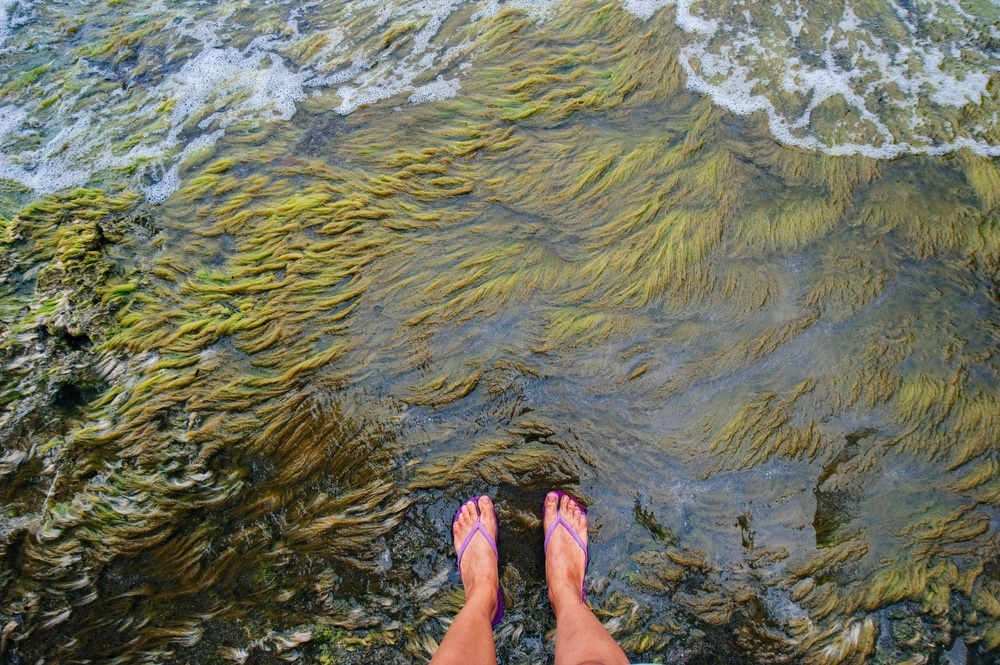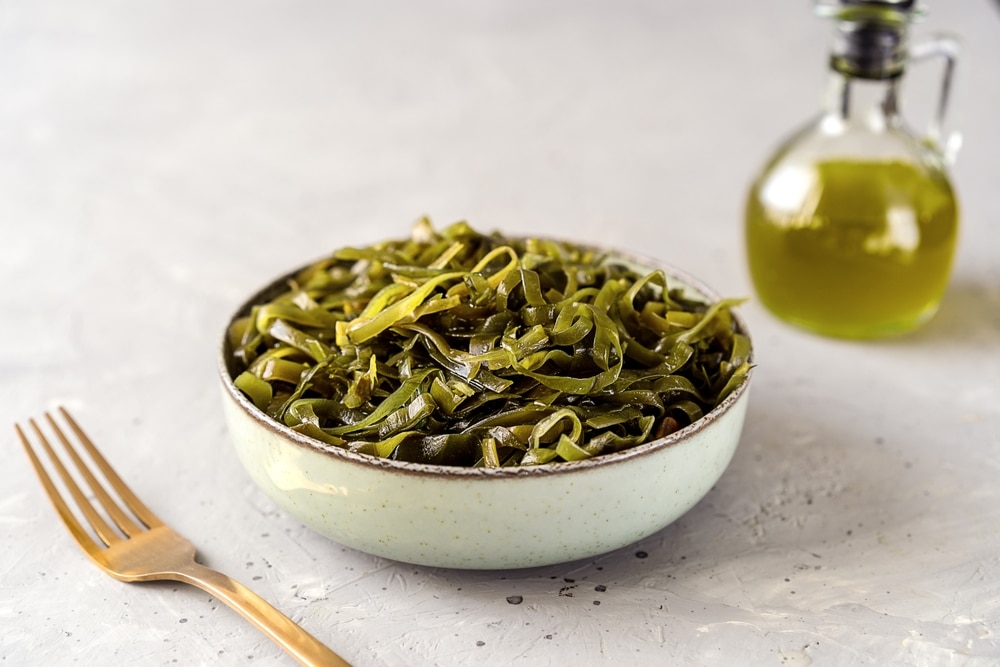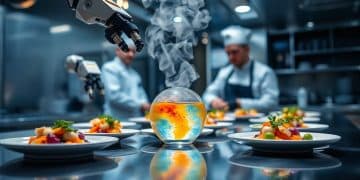For years, plant-based meats have been making waves, offering eco-conscious eaters everything from meatless burgers to vegan chicken nuggets. But now, a new player is emerging from the deep—plant-based seafood. And it’s not tofu or jackfruit pretending to be fish. The star of the show? Algae. This ocean-grown powerhouse is not only sustainable but also surprisingly tasty and nutritious. Let’s dive into why algae is quickly becoming the future of seafood alternatives.
The Rise of Plant-Based Seafood
While the idea of fake meat is already mainstream, seafood alternatives are just starting to gain serious attention. Traditional fishing practices are putting enormous pressure on marine ecosystems. Overfishing, bycatch (accidentally catching other marine species), and ocean pollution are major problems. Plus, the demand for seafood keeps rising.
That’s where plant-based seafood comes in. It offers a way to enjoy the taste and texture of fish without the environmental toll. And while there are already options made from soy, pea protein, or konjac root, algae-based products stand out for one simple reason—they come from the ocean, just like fish.
Why Algae?
Algae might not sound appetizing at first, but it’s already a common ingredient in many foods. If you’ve eaten sushi wrapped in seaweed (nori), you’ve had algae. Spirulina and chlorella are popular health supplements made from microalgae, known for being rich in nutrients.
But algae isn’t just healthy—it’s incredibly sustainable. Here’s why it’s such a powerful alternative:
- Fast-growing: Algae can grow up to 30 times faster than land-based crops.
- Minimal resources: It doesn’t need fresh water or arable land to grow.
- Carbon absorption: Algae captures CO₂ as it grows, helping to fight climate change.
- Ocean-friendly: No need to trawl the seas or damage marine habitats.
This makes algae one of the greenest ingredients on the planet—and a perfect base for plant-based seafood.
Taste and Texture That Mimics the Sea
One of the biggest challenges in creating a convincing fish alternative is getting the taste and texture right. Fish is flaky, moist, and has a subtle briny flavor that’s hard to replicate.

Algae naturally contains umami (the savory “fifth taste”) and a hint of the sea. When processed correctly, it can mimic the smell, mouthfeel, and look of real seafood. Many companies are now mixing algae with plant proteins to create products like:
- Vegan tuna salad
- Faux crab cakes
- Smoked salmon slices
- Shrimp made from seaweed extract
The result? Seafood alternatives that are not only convincing but also packed with nutrients like omega-3 fatty acids, iron, calcium, and iodine—just like the real thing.
Algae vs. Traditional Fish: A Nutritional Face-Off
Let’s talk health. Many people eat fish for its nutritional benefits—especially omega-3s, which are good for your heart and brain. But here’s a fun fact: fish don’t actually produce omega-3s themselves. They get it from eating algae.
That means you can go straight to the source. Algae-based plant-based seafood can provide:
- DHA and EPA omega-3s: The same kind found in fish.
- Complete protein: Some algae varieties contain all nine essential amino acids.
- Antioxidants: Especially in spirulina and chlorella.
- Low calories and fat: A leaner alternative to fatty fish.
And without the risk of mercury, microplastics, or other contaminants often found in wild-caught fish, algae offers a cleaner option for your plate.
Brands Making Waves
Several startups and food innovators are already leading the charge in algae-based plant-based seafood:
1. New Wave Foods
They’ve developed vegan shrimp using seaweed and plant proteins that cook, curl, and taste like the real thing.
2. Ocean Hugger Foods
Their “Ahimi” tuna is made from tomatoes but seasoned with seaweed extracts to bring the flavor of sushi-grade tuna without the fish.
3. Algama Foods
This French company uses microalgae to produce sauces, spreads, and soon full seafood products with rich omega-3 content.
4. Revo Foods
An Austrian startup creating hyper-realistic vegan smoked salmon slices using pea protein and algae oil. They even sell it pre-sliced and ready for your bagel.
These brands are not only innovating in the kitchen—they’re changing how we think about seafood.
Sustainability Matters More Than Ever
Beyond health and flavor, sustainability is truly at the heart of the plant-based seafood movement. Our oceans are under more stress than ever before—from overfishing to pollution—and the growing demand for seafood is only accelerating the damage. Choosing algae-based alternatives isn’t just a dietary preference; it’s a conscious environmental decision. Here’s a closer look at what makes plant-based seafood from algae such a smart, eco-friendly choice:
🌊 Reduced Overfishing
Overfishing is one of the most pressing threats to marine biodiversity. Millions of tons of fish are harvested every year, often faster than natural populations can recover. This leads to depleted stocks, disrupted ecosystems, and a broken balance in marine food chains. Algae-based seafood eliminates the need to take anything from the ocean, helping reduce the pressure on fish populations and giving marine ecosystems a much-needed chance to heal and regenerate.
🐢 Zero Bycatch
Bycatch refers to the accidental capture of non-target species like dolphins, sea turtles, and even seabirds. These animals often get caught in nets meant for tuna, shrimp, or other popular fish, resulting in injuries or death. With algae farming, there are no fishing nets or trawlers involved—just controlled, sustainable cultivation. That means no bycatch, no collateral damage, and a safer ocean for all marine life.
🐟 No Antibiotics or Fish Farming
Industrial aquaculture (fish farming) may seem like a sustainable option, but it comes with serious drawbacks. Fish are often kept in crowded pens where diseases spread easily, leading to heavy antibiotic use. Waste from these farms can pollute nearby waters, and escaped farmed fish can disrupt local species. Algae farming, in contrast, requires no antibiotics, no chemicals, and no confinement of animals. It’s clean, efficient, and doesn’t contribute to water pollution or species displacement.
🌱 Minimal Environmental Footprint
Algae is one of the most resource-efficient crops on the planet. It grows quickly, requires no fresh water, and doesn’t need fertile farmland. In fact, many algae farms can be placed offshore or in tanks, meaning they don’t compete with land-based agriculture for space. Unlike traditional crops, algae doesn’t rely on synthetic fertilizers or pesticides, which are major sources of pollution in both soil and waterways. And because algae absorbs carbon dioxide as it grows, it actually helps fight climate change by reducing greenhouse gases.
♻️ Scalable and Sustainable for the Future
Perhaps the most exciting part? Algae is scalable. As demand for seafood grows globally, we need solutions that can grow with it—without further damaging the planet. Algae-based plant-based seafood offers just that. It can be produced in large volumes using minimal inputs, and with ongoing innovation in food technology, the cost and availability will only improve.
The Future of Seafood Is Green (and Slimy)
Algae might not sound glamorous, but it could be the key to feeding a growing global population without destroying the planet. The ocean covers over 70% of Earth’s surface, and tapping into its naturally occurring plant life could help us build a more resilient food system.
In the future, your sushi roll or poke bowl might contain seaweed-based salmon that’s just as satisfying as the real deal. And that’s not science fiction—it’s already happening in test kitchens and specialty markets around the world.
With more investment, improved food tech, and consumer demand for greener meals, algae-based plant-based seafood could become a supermarket staple.
Tips for Trying It Yourself
Curious to taste the sea without the fish? Here are a few tips:
- Check specialty grocery stores: Many carry seaweed-based seafood, especially in vegan or frozen sections.
- Try seaweed snacks: Nori sheets, seaweed chips, and wakame salads are a good intro.
- Experiment at home: Mix seaweed flakes or dulse into soups, ramen, or vegan tuna recipes.
- Look for omega-3-rich algae oil supplements if you’re plant-based and want to avoid fish oil.
Don’t expect it to taste exactly like fish right away, but give it time—many people grow to love the subtle ocean flavor that comes with it.

Plant-based seafood is more than a trend—it’s a smart solution for a planet under pressure. Algae-based alternatives offer the best of both worlds: a taste of the sea and peace of mind that your meal didn’t harm it.
As food technology advances and more people get curious about sustainable eating, we’re likely to see algae rise from humble seaweed to menu mainstay. Whether you’re vegan, pescatarian, flexitarian, or just eco-curious, now is the perfect time to give the new wave of seafood a try.
Who knew the future of fish could be so green?




